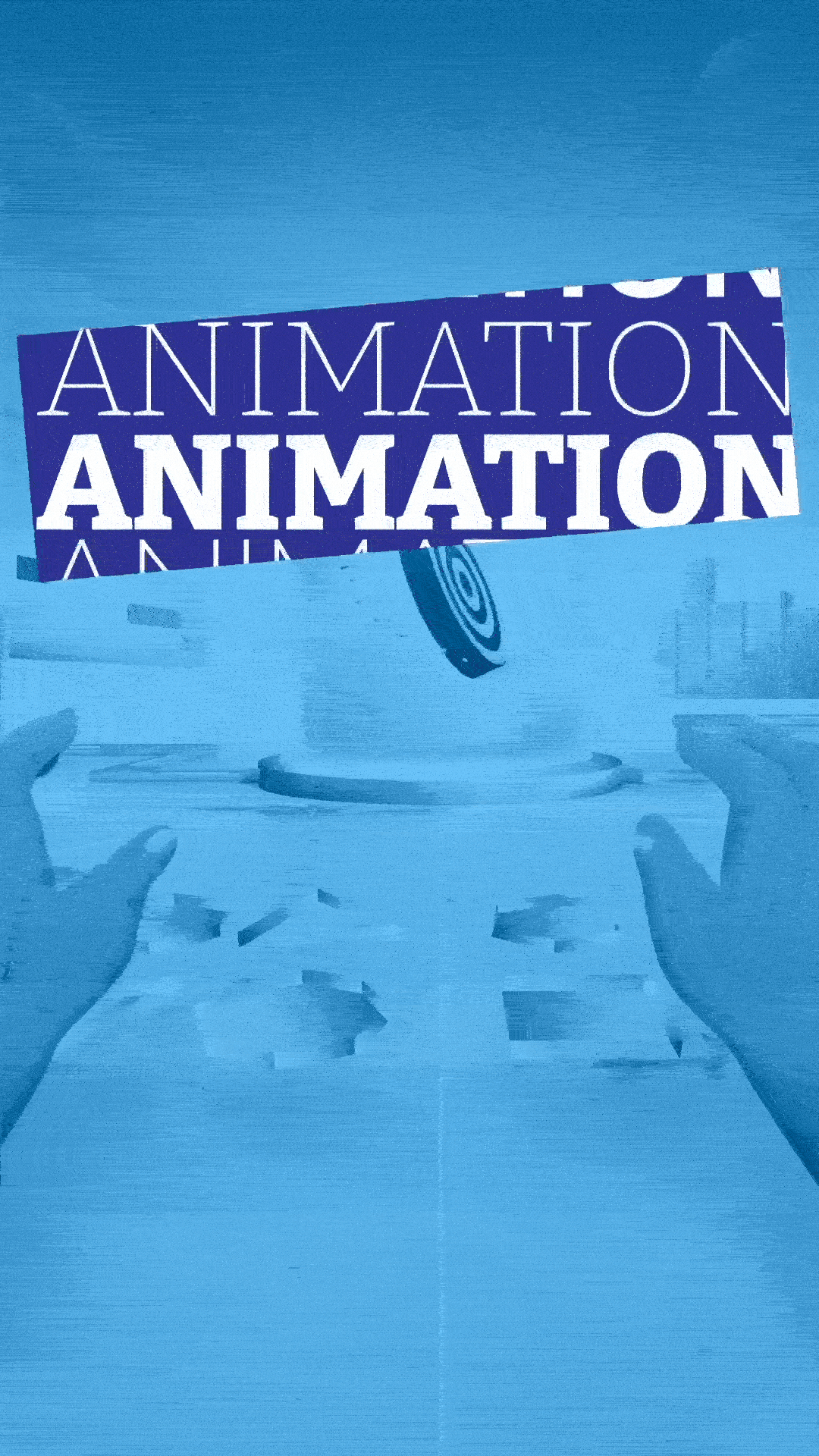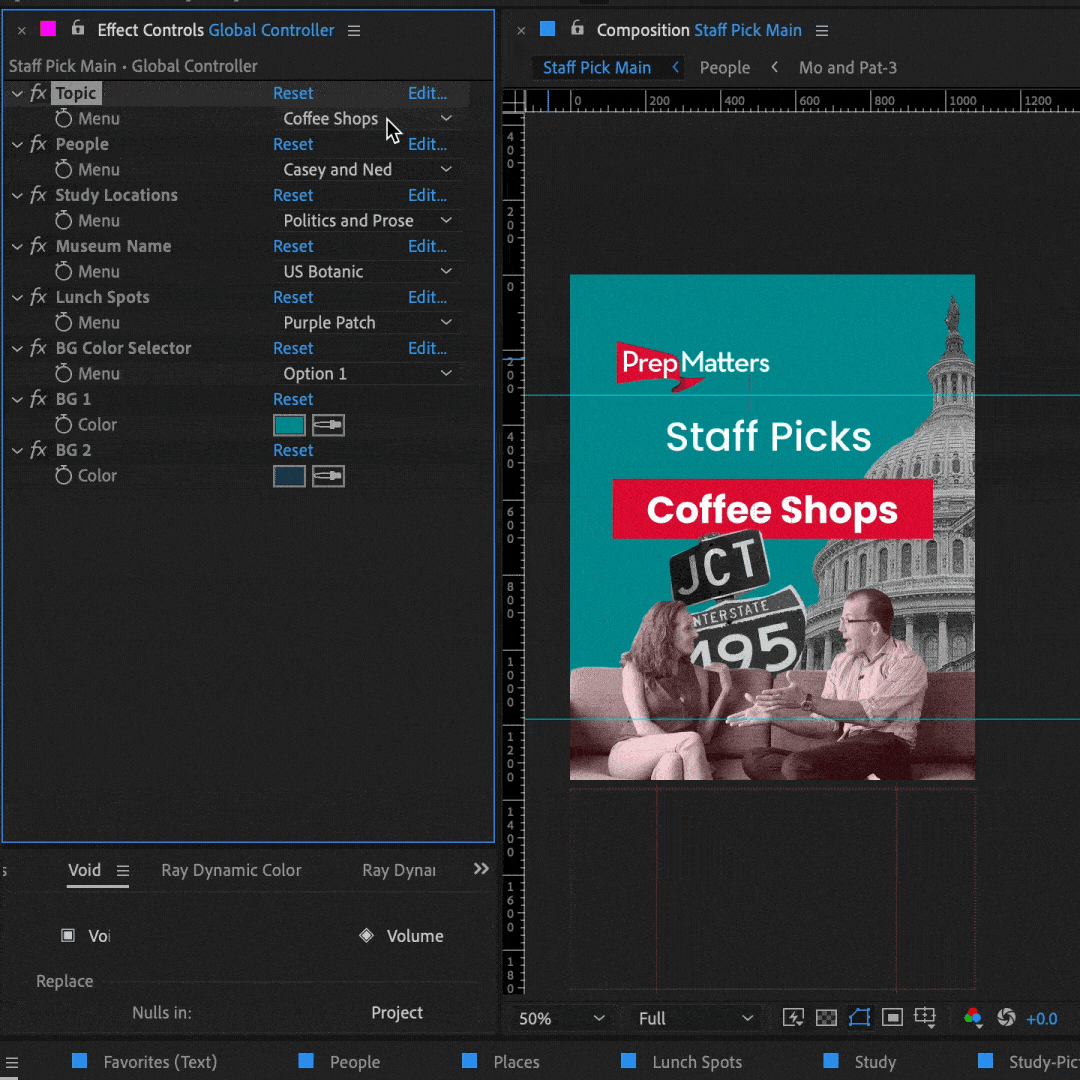Companies looking to maintain consistent branding throughout their communications often need help with uniformity in video content. Primarily because often video work is outsourced. While many of these outside teams have access to brand standards, their disparate interpretations and your inability to replicate their efforts make your content inconsistent. In today’s high content demand environment, many marketing teams must discover iterative video and animation solutions that allow quick production and flexibility.
Iteration commands scalability
When your teams need iteration and flexibility, motion graphics templates come into play. Depending on your internal capabilities and scope, your team may need to work with an outside group to develop graphics packages to lay over video edits, or you may need to do a project that can deliver you 40+ videos with advanced animations. However, before you scope the project, you need to know the right questions to ask to set your team up for success six months down the road and get the maximum value for your limited budget. If done right, you can create hundreds of pieces of video content, all with consistent branding.

The right questions to ask
First, you need to consider how many video creative outputs your team puts together. Typically, a company will have product demos, subject matter expert videos, corporate showcases, recruiting videos, and internal videos. However, your team likely has some ambitions; include your wish list and team goals. IE: “If we only had A, then we could run with B.” And consider your upcoming product launch and campaign initiatives.
Once you understand current and future needs, you can start thinking of what common threads run with every video.
- Do you need a consistent opener?
- Do you need consistent and dynamic lower thirds?
- Do you need a way to highlight products in every video?
- What campaigns are we running in the next 6 months?
- Do we have social media content buckets we need to account for?
- Do we need to develop a character or a set of characters?
- Will this be used in foreign countries?
After you have your question answered and scope defined comes arguably the most challenging portion: budget allocation.
Investments yield results
Templates will likely be more expensive when comparing a template project to a single video. However, I caution you against this comparison because templates unlock tremendous flexibility and free up your team to focus on what they are good at content generation for the business. In contrast, a video gives you a static deliverable for a minor use. Additionally, when you roll up video production costs for the entire year, you are likely arriving at a lower overall number when you invest in templates. You may also consider reallocating some of your product launch budgets, as those projects will benefit from the improved branded content.

Where creative meets pragmatism
When you begin to scope your templates, consider the abundance of creative resources your team already has. Templates can breathe new life into these assets. For example, your team will likely have professional headshots for most of your staff. Those high-quality pictures can be utilized as subject matter experts or employee highlights, as shown in these projects we worked on for a client and our social media content.
Additionally, portions of past video content can prove very useful to be placed into your templates. You can also use this time to look into the future to see if your team will create any characters for campaigns. If scoped correctly, these characters can be rigged with specific movements and integrated into your templates, extending the campaign’s reach and familiarity.

Consider workflow
When creating templates for your team, it is crucial to consider your workflow. For example, you want to generate a short recap video for all of your top accounts highlighting the accomplishments throughout the year. And you would like to have these available in a short time frame. With a template, your team can have it structured so that videos can be rendered out simply by your team inputting data on a spreadsheet. Depending on the setup of the workflow, these videos can be emailed to your team shortly after that.
Custom Templates and Toolkits are the future for marketing teams.
Unless you have the luxury of a large team and an unlimited budget, you are facing a content environment that is increasing in demand and expectations with the same or smaller budgets. How would you handle it if you needed to double the content with either the same budget or a bit more? The answer is investments in templates and toolkits. Modern marketing teams who want to grow and differentiate can no longer afford to approach creative by purchasing creative in a one-off fashion or using the same limited Canva tools that every other budget-strapped team is trying to use.
When looking out at the next 6 to 12 months for your team, I encourage you to think about how a systematic yet creative approach can solve problems for your team. We would be happy to talk with your team about your challenges and if something like an animation template toolkit makes sense for your team.


Recent Comments